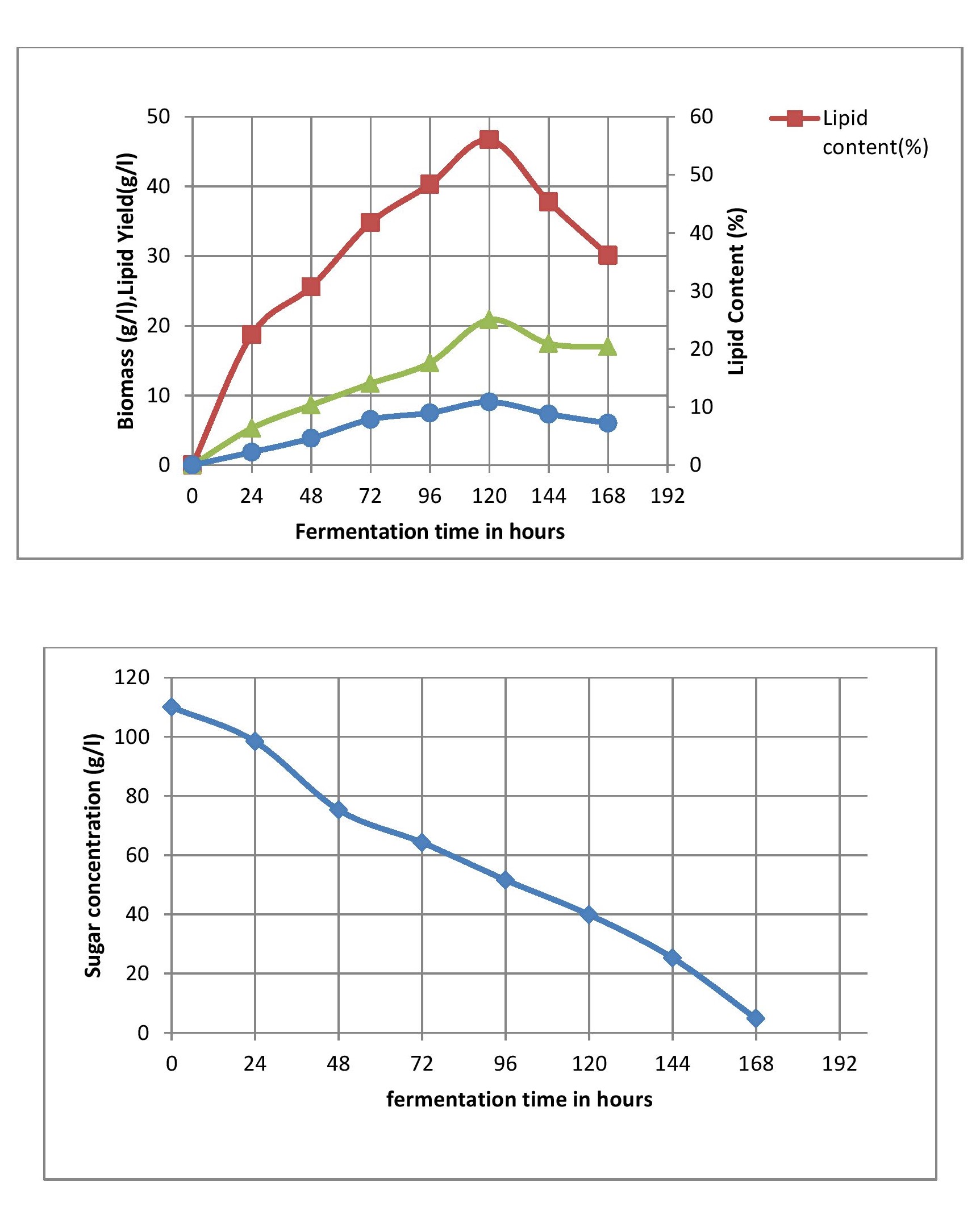
Among the lignocellulose wastes Paddy Straw is the most abundant one which have the ability of being used as a feedstock for production of biofuel. In this work, paddy straw is subjected to dilute acid pretreatment, detoxification and fermentation processes for the production of lipids. Rhodosporidium Toruloides, an oleaginous yeast strain is used for fermentation and produce biomass and lipids. Straw of paddy is pre-processed with 2% (v/v) the sulfuric acid at 121o C for an hour that is 60 minutes and then detoxified. Fermentation process has to be optimized in order to achieve higher lipid yields and higher cellulose content. In this study, optimization is carried out by using response surface process and Box Behnken Design (BBD) for learning impact of concentration of inoculum, pH and temperature on fermentation. During hydrolysis and fermentation processes, sugar concentration is analysed using dinitro salicylic acid reagent and standard curve of glucose. Observations show that highest yield of sugar from the dilute acid pre-treatment is 3.3 g/L. Optimum conditions for lipid yield from fermentation process is 10.88 g/L at a pH of 6, at a temperature of 25°C and at 10% inoculum loading.
Total file downloads: 12